| A Second Knock at the Door | |
|---|---|
| Directed by | Christopher Grimes |
Release date |
|
A Second Knock at the Door is a documentary on friendly fire in Iraq and Afghanistan. [1] [2] The film follows military families after they are told their family member died in a "fratricide" incident. [3] All the families profiled in the film only learned their family member was killed by a comrade, not an enemy, months after they first learned of their death. [4]
Director Christopher Grimes has described being inspired by the alleged coverup of former sport star Pat Tillman being killed by his comrades. [3]
The film was screened at the Flyway Film Festival in 2011, and the East Lansing Film Festival in 2012. [5] [6]
Loved ones of those in the military who lost their lives to "friendly fire" are interviewed about what really happened to cause the deaths.
For Christopher E. Grimes, then a graduate student planning his Master's thesis in Public Policy at Northwestern University, the case provoked the question: how many other cases like Pat Tillman's are there? The results of Grimes' thesis research is the award-winning documentary feature A SECOND KNOCK AT THE DOOR, which shares the heart-breaking stories of four families who have lost loved ones due to friendly fire.
The title, A Second Knock At The Door, is a tell-tale application of the emotions involved in these family's experiences. After being told that their soldier was killed by mortar fire from an enemy or a car accident they discover, most often months later, that their kin was killed by friendly fire. In some cases the army went to great lengths to cover up the exact details of how the solider[ sic ] was killed. It is alarming to consider that the U.S. Army would lie about a soldier's death to save face, but they're only human.
When I saw A SECOND KNOCK AT THE DOOR, at last year's Flyway Film Festival, I was completely knocked off my feet. This is a powerful documentary which focuses on the issue of American troop fatalities caused by "friendly fire," which is the inadvertent firing on one's own soldiers while engaging with an enemy.To the government, friendly fire incidents are embarrassing blunders that needn't be dwelled upon; to the families, the fog and secrecy surrounding their loved ones' deaths make the pain of loss even worse.

In military terminology, friendly fire or fratricide is an attack by belligerent or neutral forces on friendly troops while attempting to attack enemy/hostile targets. Examples include misidentifying the target as hostile, cross-fire while engaging an enemy, long range ranging errors or inaccuracy. Accidental fire not intended to attack enemy/hostile targets, and deliberate firing on one's own troops for disciplinary reasons, is not called friendly fire, and neither is unintentional harm to civilian or neutral targets, which is sometimes referred to as collateral damage. Training accidents and bloodless incidents also do not qualify as friendly fire in terms of casualty reporting.

A booby trap is a device or setup that is intended to kill, harm or surprise a human or another animal. It is triggered by the presence or actions of the victim and sometimes has some form of bait designed to lure the victim towards it. The trap may be set to act upon trespassers that enter restricted areas, and it can be triggered when the victim performs an action. It can also be triggered by vehicles driving along a road, as in the case of improvised explosive devices (IEDs).

Killed in action (KIA) is a casualty classification generally used by militaries to describe the deaths of their own personnel at the hands of enemy or hostile forces at the moment of action. The United States Department of Defense, for example, says that those declared KIA did not need to have fired their weapons, but only to have been killed due to hostile attack. KIAs include those killed by friendly fire in the midst of combat, but not from incidents such as accidental vehicle crashes, murder or other non-hostile events or terrorism. KIA can be applied both to front-line combat troops and to naval, air and support troops.
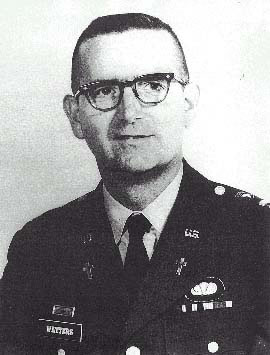
Charles Joseph Watters was a chaplain (major) in the United States Army and Roman Catholic priest. He was posthumously awarded the Medal of Honor for bravery exhibited while rescuing wounded men in the Vietnam War's Battle of Dak To.

Patrick Daniel Tillman Jr. was an American professional football player for the Arizona Cardinals of the National Football League (NFL) who left his sports career and enlisted in the United States Army in May 2002 in the aftermath of the September 11 attacks. His service in Iraq and Afghanistan, as well as his subsequent death, were the subject of national attention. This increased after it was revealed that he was killed by friendly fire.

Sammy Lee Davis is an American soldier who served in the United States Army during the Vietnam War and was awarded the nation's highest military medal for valor, the Medal of Honor.

Haqeeqat is a 1964 Indian Hindi-language war-drama film directed and produced by Chetan Anand. The film stars Dharmendra, Balraj Sahni, Priya Rajvansh, Sudhir, Sanjay Khan and Vijay Anand in major roles. The music of the film is composed by Madan Mohan and the lyrics of the songs are by Kaifi Azmi. The film is based on the events of the 1962 Sino-Indian War about a small platoon of soldiers in Ladakh pitched against a much larger adversary. The film was constructed around the battle of Rezang La in Ladakh and showcases a fictionalised version of the last stand of Ahir Company, 13 Kumaon led by Major Shaitan Singh. However the film is not only a representation of war, but a dramatic retelling of the impact war has on the common soldier. Chetan Anand dedicated the film to Jawaharlal Nehru and the soldiers in Ladakh. The film is widely considered one of India's greatest black and white war-films.
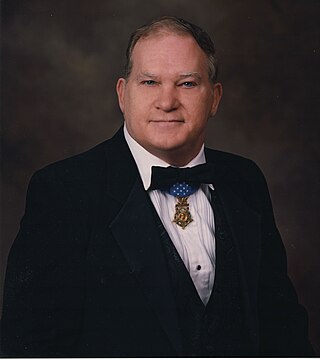
John Franklin Baker Jr. was a United States Army Master Sergeant who served in the Vietnam War and a recipient of the Medal of Honor.

Raymond Richard Wright was a United States Army soldier from New York and a recipient of the United States military's highest decoration—the Medal of Honor—for his actions in the Vietnam War.
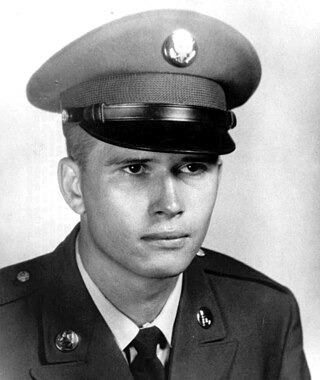
Don Leslie Michael was a United States Army soldier and a recipient of the United States military's highest decoration—the Medal of Honor—for his actions in the Vietnam War.
Harold O. Messerschmidt was a United States Army soldier and a recipient of the United States military's highest decoration—the Medal of Honor—for his actions in World War II.

City of Life and Death is a 2009 Chinese drama film written and directed by Lu Chuan, marking his third feature film. The film deals with the Battle of Nanjing and the following massacre committed by the Japanese army during the Second Sino-Japanese War. The film is also known as Nanking! Nanking! or Nanjing! Nanjing!. The film was released in China on April 22, 2009, and became a major box office success in the country, earning CN¥150 million in its first two and a half weeks alone.
Roy Woodroe Harmon was a United States Army soldier and a recipient of the United States military's highest decoration—the Medal of Honor—for his actions in World War II.
Amir Bar-Lev is noted for his work in directing documentary films. His debut, Fighter (2000) (director), was named one of the top documentaries of the year by Newsweek, Rolling Stone, and The Village Voice. Fighter won six international festival awards and was called “brilliant,” by The New Yorker, “enthralling” by the New York Times, and “one of the best documentaries of this year or any other” by Rolling Stone.

Speedy Delivery is a 2008 documentary film directed and produced by Paul B. Germain. The film follows the life story of David Newell, better known as Mr. McFeely from the children's television show Mister Rogers' Neighborhood. This was released two months after the series' 40th anniversary. Speedy Delivery is the first film about Mister Rogers.
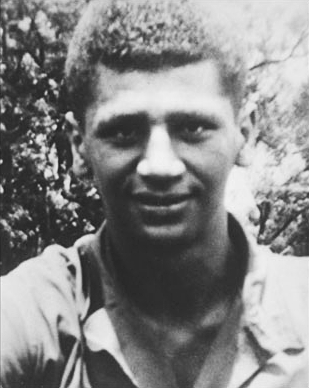
Anthony Thomas Kahoʻohanohano was an American soldier who was killed in action on September 1, 1951, during the Korean War. He became a recipient of the United States military's highest decoration for valor, the Medal of Honor.
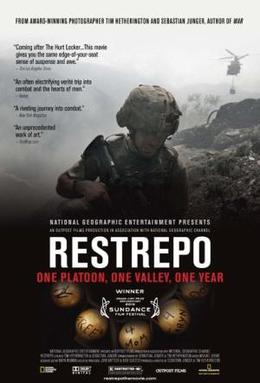
Restrepo is a 2010 American documentary film about the War in Afghanistan directed by British photojournalist Tim Hetherington and American journalist Sebastian Junger. It explores the year that Junger and Hetherington spent, on assignment for Vanity Fair, in Afghanistan's Korengal Valley, embedded with the Second Platoon, B Company, 2nd Battalion, 503rd Infantry Regiment, 173rd Airborne Brigade Combat Team of the U.S. Army. The Second Platoon is depicted defending the outpost (OP) named after a platoon medic who was killed earlier in the campaign, PFC Juan Sebastián Restrepo, who was a Colombian-born naturalized U.S. citizen. The directors stated that the film is not a war advocacy documentary, they simply "wanted to capture the reality of the soldiers."

Where Men Win Glory: The Odyssey of Pat Tillman, a 2009 book written by Jon Krakauer, is a biography of Pat Tillman, an American football player who left his professional career and enlisted in the United States Army after the September 11 attacks. He subsequently was killed in 2004 in the US war in Afghanistan by friendly fire, an incident which the US government attempted to cover up. To write the book, Krakauer drew heavily upon Tillman's journals, interviews with the Tillman family, Boots On the Ground by Dusk: My Tribute to Pat Tillman by Mary Tillman, and extensive research on the ground in Afghanistan.
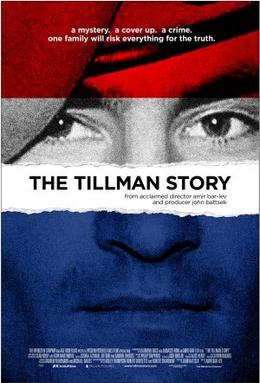
The Tillman Story is a 2010 American documentary film directed by Amir Bar-Lev and narrated by Josh Brolin. It is about the death of professional-football-player-turned-Army-Ranger Pat Tillman in the War in Afghanistan, the coverup of the circumstances of his death, and his family's struggle to unearth the truth. The film was nominated for the Grand Jury Prize at the 2010 Sundance Film Festival, and it was named the Best Documentary of 2010 by the San Francisco Film Critics Circle, the St. Louis Gateway Film Critics Association, and the Florida Film Critics Circle, as well as one of the Top Five Documentaries of the year by the National Board of Review.
The Flyway Film Festival is an annual independent film festival along the shores of Lake Pepin in Wisconsin and Minnesota, United States, held in October. It was founded in 2008 by Rick Vaicius in Pepin, Wisconsin, and has since expanded to include screenings in Stockholm and Alma, Wisconsin and Red Wing and Wabasha, Minnesota.